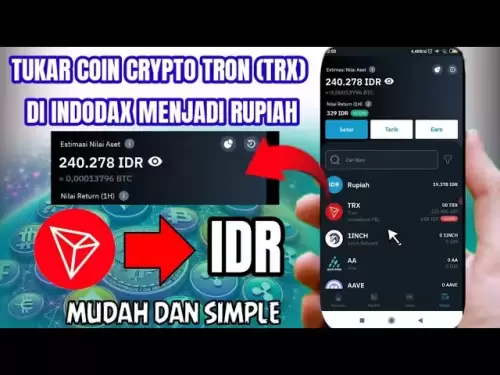-
 Bitcoin
Bitcoin $108,489.6704
1.13% -
 Ethereum
Ethereum $2,502.0528
2.92% -
 Tether USDt
Tether USDt $1.0002
0.00% -
 XRP
XRP $2.1941
0.51% -
 BNB
BNB $655.3375
1.00% -
 Solana
Solana $151.5977
1.27% -
 USDC
USDC $0.9999
0.00% -
 TRON
TRON $0.2768
0.32% -
 Dogecoin
Dogecoin $0.1676
2.86% -
 Cardano
Cardano $0.5675
0.98% -
 Hyperliquid
Hyperliquid $40.6109
7.48% -
 Bitcoin Cash
Bitcoin Cash $500.7746
2.09% -
 Sui
Sui $2.8328
2.03% -
 Chainlink
Chainlink $13.4452
1.26% -
 UNUS SED LEO
UNUS SED LEO $9.1623
0.39% -
 Avalanche
Avalanche $18.2267
2.24% -
 Stellar
Stellar $0.2382
0.00% -
 Toncoin
Toncoin $2.8885
1.68% -
 Shiba Inu
Shiba Inu $0.0...01159
0.91% -
 Litecoin
Litecoin $87.1827
0.88% -
 Hedera
Hedera $0.1511
2.90% -
 Monero
Monero $315.4992
-0.59% -
 Polkadot
Polkadot $3.4663
2.34% -
 Bitget Token
Bitget Token $4.6118
-0.65% -
 Dai
Dai $1.0000
-0.01% -
 Ethena USDe
Ethena USDe $1.0003
0.02% -
 Uniswap
Uniswap $7.2989
4.69% -
 Pepe
Pepe $0.0...01003
5.73% -
 Aave
Aave $275.5616
7.15% -
 Pi
Pi $0.5181
-2.49%
How do I perform cross-chain transfers on Gemini?
Cross-chain transfers on Gemini allow users to move assets between blockchains like Ethereum and Bitcoin, ensuring flexibility and efficient asset management.
Apr 04, 2025 at 07:14 am
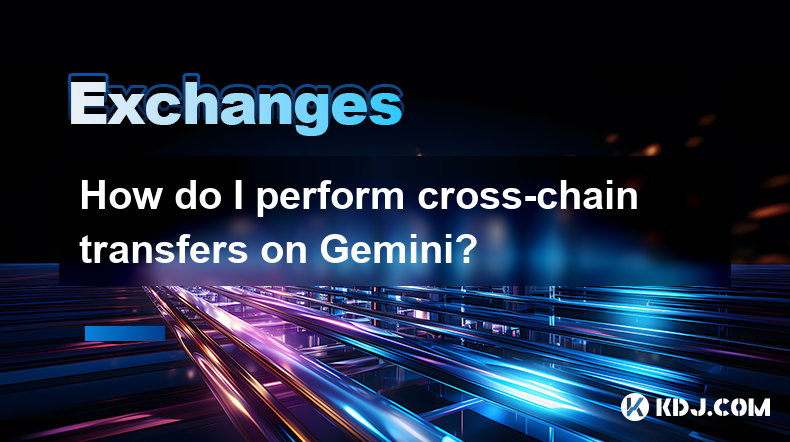
Understanding Cross-Chain Transfers on Gemini
Cross-chain transfers allow users to move assets from one blockchain to another, enabling greater flexibility and utilization of different blockchain networks. On Gemini, a reputable cryptocurrency exchange, users can perform these transfers to manage their assets across various blockchains efficiently. This article will guide you through the process of executing cross-chain transfers on Gemini, ensuring you understand each step and can perform the transfers confidently.
Preparing for a Cross-Chain Transfer
Before initiating a cross-chain transfer on Gemini, it's essential to ensure that your account is set up correctly and that you have the necessary assets available. Here’s what you need to do:
- Verify your Gemini account: Ensure that your account is fully verified. This typically involves completing the KYC (Know Your Customer) process, which includes submitting identification documents and personal information.
- Fund your account: Make sure you have the cryptocurrency you wish to transfer in your Gemini wallet. You can deposit funds from an external wallet or purchase them directly on Gemini.
- Check supported blockchains: Confirm that Gemini supports the specific blockchain you want to transfer to. Gemini typically supports transfers between popular blockchains like Ethereum, Bitcoin, and others.
Initiating the Cross-Chain Transfer
Once your account is ready, you can start the process of transferring assets across chains. Follow these detailed steps:
- Log into your Gemini account: Access your Gemini account using your credentials.
- Navigate to the transfer section: Go to the "Transfer" or "Withdraw" section of the platform. This is usually found in the main menu or under the "Assets" tab.
- Select the asset to transfer: Choose the cryptocurrency you wish to move. For example, if you want to transfer ETH, select Ethereum from the list of available assets.
- Choose the destination blockchain: Gemini will present you with options for the destination blockchain. Select the blockchain to which you want to transfer your assets.
- Enter the recipient address: Input the wallet address on the destination blockchain where you want the assets to be sent. Double-check this address to avoid errors, as blockchain transactions are irreversible.
- Specify the amount: Enter the amount of cryptocurrency you wish to transfer. Ensure you have enough balance to cover any potential fees.
- Review and confirm: Carefully review all the details of your transfer, including the asset, destination blockchain, recipient address, and amount. Once satisfied, confirm the transfer.
- Authorize the transaction: Depending on your security settings, you may need to enter a 2FA (two-factor authentication) code or use a security device to authorize the transaction.
Monitoring the Transfer
After initiating the transfer, it's important to monitor its progress to ensure it completes successfully. Here's how you can do that:
- Check the transaction status: Gemini will provide a transaction ID or hash. Use this to track the status of your transfer on a blockchain explorer relevant to the destination blockchain.
- Wait for confirmation: Cross-chain transfers can take some time to process due to the need for confirmations on both the source and destination blockchains. Be patient and allow sufficient time for the transfer to complete.
- Verify the receipt: Once the transfer is complete, check your wallet on the destination blockchain to confirm that the assets have been received. Ensure the amount and asset type match what you sent.
Handling Potential Issues
Despite following the steps carefully, you might encounter issues during a cross-chain transfer. Here’s how to address some common problems:
- Transaction stuck: If your transaction appears stuck, check the transaction status on a blockchain explorer. Sometimes, transactions can be delayed due to network congestion. If the transaction remains stuck for an extended period, contact Gemini support for assistance.
- Incorrect recipient address: If you accidentally enter the wrong recipient address, the transfer cannot be reversed. Always double-check the address before confirming the transfer. If you make a mistake, reach out to Gemini support immediately, though they may not be able to recover the funds.
- Insufficient funds or fees: Ensure you have enough balance to cover both the transfer amount and any associated fees. If you encounter an error due to insufficient funds, add more to your Gemini account and retry the transfer.
Frequently Asked Questions
Q: Can I perform cross-chain transfers for any cryptocurrency on Gemini?
A: No, Gemini supports cross-chain transfers for specific cryptocurrencies and between certain blockchains. Always check the supported assets and blockchains before initiating a transfer.
Q: Are there fees associated with cross-chain transfers on Gemini?
A: Yes, Gemini charges fees for cross-chain transfers. The fee structure can vary depending on the asset and the blockchains involved. You can find detailed fee information on Gemini's website or within the transfer section of the platform.
Q: How long does a cross-chain transfer take on Gemini?
A: The duration of a cross-chain transfer can vary based on the blockchains involved and network conditions. Typically, it can take anywhere from a few minutes to several hours. Always monitor the transaction status and allow sufficient time for completion.
Q: What should I do if my cross-chain transfer fails?
A: If your transfer fails, first check the transaction status on a blockchain explorer. If the issue persists, contact Gemini's customer support for assistance. They can provide guidance on resolving the problem or recovering any lost funds if possible.
Disclaimer:info@kdj.com
The information provided is not trading advice. kdj.com does not assume any responsibility for any investments made based on the information provided in this article. Cryptocurrencies are highly volatile and it is highly recommended that you invest with caution after thorough research!
If you believe that the content used on this website infringes your copyright, please contact us immediately (info@kdj.com) and we will delete it promptly.
- Rekt, Ovie Faruq, and the Movement: How a Crypto Meme Became a Consumer Brand
- 2025-06-30 21:10:14
- BlockDAG, Crypto Loyalty, and the XRP Slide: What's the Buzz?
- 2025-06-30 21:10:14
- Cryptos to Invest in Now: Spotting the Future Giants
- 2025-06-30 20:50:12
- PENGU's Upside Rally: Decoding the Stock Potential
- 2025-06-30 21:15:12
- Arbitrum, Robinhood, and Pullback Risk: Decoding the Latest Buzz
- 2025-06-30 21:20:12
- Chainlink Price Prediction: Will LINK Hit $13 Peak or Face Correction?
- 2025-06-30 21:25:11
Related knowledge
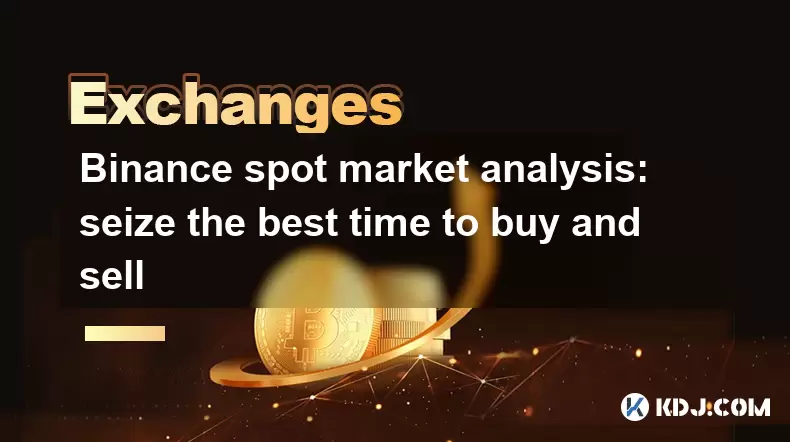
Binance spot market analysis: seize the best time to buy and sell
Jun 19,2025 at 04:56pm
Understanding the Binance Spot MarketThe Binance spot market is one of the most popular platforms for cryptocurrency trading globally. It allows users to trade digital assets at current market prices, making it essential for traders aiming to buy low and sell high. Unlike futures or margin trading, spot trading involves direct ownership of the asset aft...
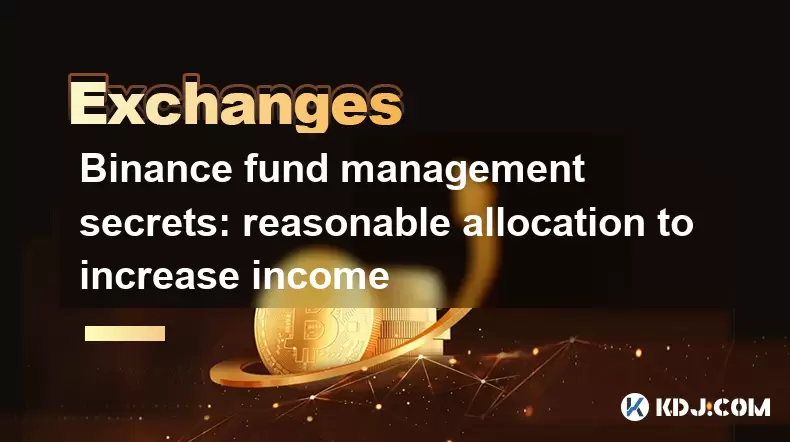
Binance fund management secrets: reasonable allocation to increase income
Jun 22,2025 at 02:29pm
Understanding Binance Fund ManagementBinance fund management involves strategic allocation of your cryptocurrency assets to optimize returns while managing risk. The key to successful fund management lies in understanding how different investment options on the Binance platform can be utilized to create a diversified portfolio. This includes spot tradin...

Binance trading pair selection skills: find the best buying and selling combination
Jun 23,2025 at 02:49am
Understanding the Basics of Trading Pairs on BinanceBefore diving into trading pair selection skills, it's essential to understand what a trading pair is. On Binance, a trading pair refers to two cryptocurrencies that can be traded against each other. For example, BTC/USDT means Bitcoin is being traded against Tether. Each trading pair has its own liqui...
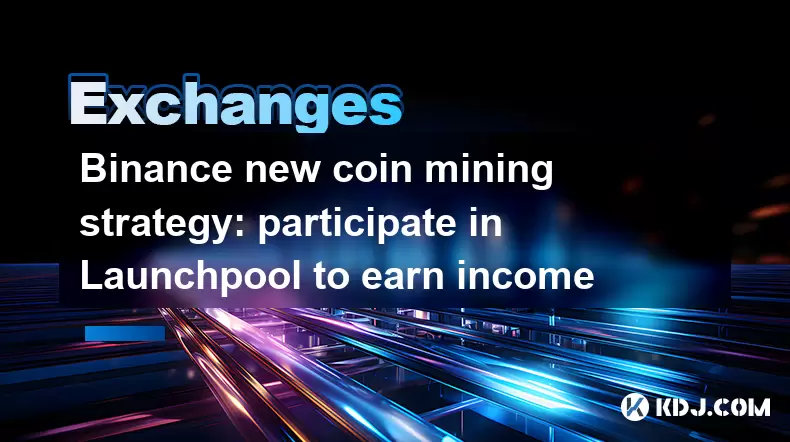
Binance new coin mining strategy: participate in Launchpool to earn income
Jun 23,2025 at 11:56am
What is Binance Launchpool and how does it work?Binance Launchpool is a feature introduced by the world’s largest cryptocurrency exchange, Binance, to allow users to earn new tokens through staking. This platform enables users to stake their existing cryptocurrencies (such as BNB, BUSD, or other supported assets) in exchange for newly launched tokens. T...
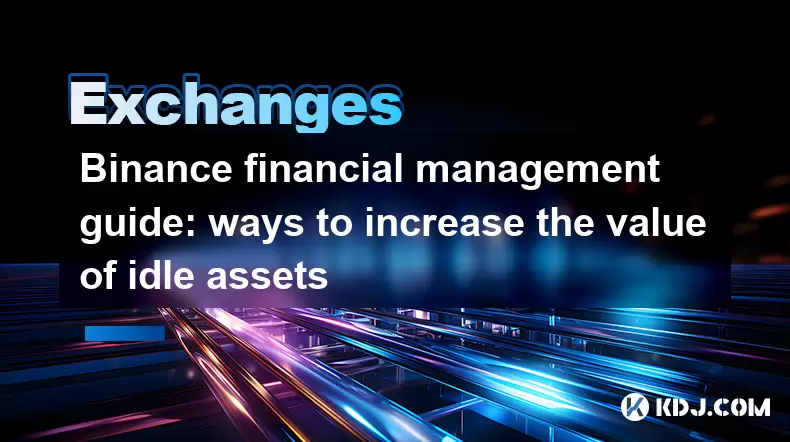
Binance financial management guide: ways to increase the value of idle assets
Jun 19,2025 at 11:22pm
Understanding Idle Assets in the Cryptocurrency SpaceIn the fast-paced world of cryptocurrency, idle assets refer to digital currencies that are not actively being used for trading, staking, or yield farming. Holding these funds in a wallet without utilizing them means missing out on potential growth opportunities. Binance, as one of the leading platfor...
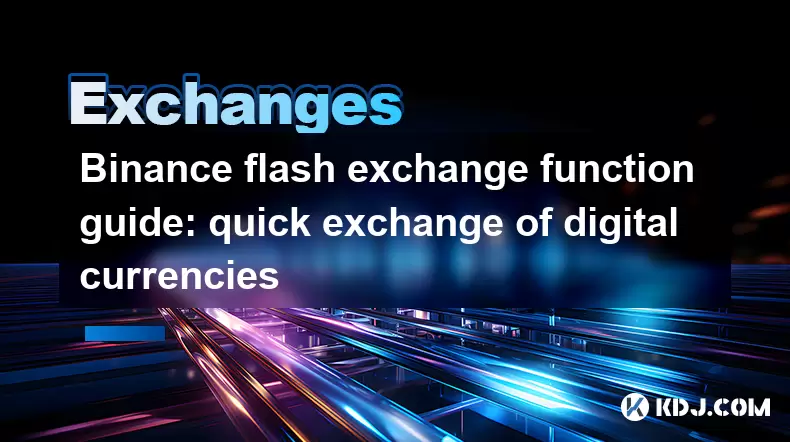
Binance flash exchange function guide: quick exchange of digital currencies
Jun 23,2025 at 12:29pm
What is the Binance Flash Exchange Function?The Binance Flash Exchange function is a powerful tool designed to allow users to instantly swap between supported cryptocurrencies without the need for placing traditional buy/sell orders. This feature simplifies the trading process by offering a direct exchange mechanism, eliminating the requirement to conve...

Binance spot market analysis: seize the best time to buy and sell
Jun 19,2025 at 04:56pm
Understanding the Binance Spot MarketThe Binance spot market is one of the most popular platforms for cryptocurrency trading globally. It allows users to trade digital assets at current market prices, making it essential for traders aiming to buy low and sell high. Unlike futures or margin trading, spot trading involves direct ownership of the asset aft...

Binance fund management secrets: reasonable allocation to increase income
Jun 22,2025 at 02:29pm
Understanding Binance Fund ManagementBinance fund management involves strategic allocation of your cryptocurrency assets to optimize returns while managing risk. The key to successful fund management lies in understanding how different investment options on the Binance platform can be utilized to create a diversified portfolio. This includes spot tradin...

Binance trading pair selection skills: find the best buying and selling combination
Jun 23,2025 at 02:49am
Understanding the Basics of Trading Pairs on BinanceBefore diving into trading pair selection skills, it's essential to understand what a trading pair is. On Binance, a trading pair refers to two cryptocurrencies that can be traded against each other. For example, BTC/USDT means Bitcoin is being traded against Tether. Each trading pair has its own liqui...

Binance new coin mining strategy: participate in Launchpool to earn income
Jun 23,2025 at 11:56am
What is Binance Launchpool and how does it work?Binance Launchpool is a feature introduced by the world’s largest cryptocurrency exchange, Binance, to allow users to earn new tokens through staking. This platform enables users to stake their existing cryptocurrencies (such as BNB, BUSD, or other supported assets) in exchange for newly launched tokens. T...

Binance financial management guide: ways to increase the value of idle assets
Jun 19,2025 at 11:22pm
Understanding Idle Assets in the Cryptocurrency SpaceIn the fast-paced world of cryptocurrency, idle assets refer to digital currencies that are not actively being used for trading, staking, or yield farming. Holding these funds in a wallet without utilizing them means missing out on potential growth opportunities. Binance, as one of the leading platfor...

Binance flash exchange function guide: quick exchange of digital currencies
Jun 23,2025 at 12:29pm
What is the Binance Flash Exchange Function?The Binance Flash Exchange function is a powerful tool designed to allow users to instantly swap between supported cryptocurrencies without the need for placing traditional buy/sell orders. This feature simplifies the trading process by offering a direct exchange mechanism, eliminating the requirement to conve...
See all articles

























